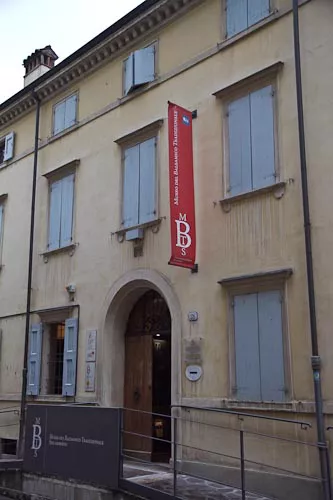Summary
Via F. Roncati, 28, 41057 Spilamberto MO, Italy
Phone +39 059 781614
When my Italian neighbors introduced me to Balsamic vinegar (Balsamico Tradizionale), my culinary perspective transformed. The moment I tasted the rich flavor from a slender vial of this exquisite liquid, I realized that I could no longer enjoy the industrial versions of balsamic vinegar. The years it takes to create this traditional balsamic vinegar are undoubtedly worth the wait.
While many supermarkets offer cheaper, unaged versions known as “aceto balsamico di Modena,” traditional Balsamic vinegar, or aceto balsamico tradizionale, is an entirely different culinary experience. Hence, every foodie is encouraged to:
- Taste authentic Balsamic Vinegar (look for aceto balsamico tradizionale DOP in distinctive 100ml numbered bottles).
- Embark on a journey to the Balsamic Vinegar Museum in Spilamberto, Italy.
* DOP, or Denominazione di Origine Protetta, identifies food products linked to their region of origin, ensuring authenticity in taste and production methods.
Where is Spilamberto and the Museo del Balsamico Tradizionale?
Spilamberto is a charming town of approximately 11,500 people, located in the Modena Province of the Emilia-Romagna region of Italy, about 17 km southwest of Modena. The state road SP623, known as the “Via Modenese,” connects to Spilamberto. For those using public transportation, take city bus no. 7 from the Modena train station and transfer to a bus headed to Spilamberto.
The Museo del Balsamico Tradizionale is situated at Via Roncati, 28, in Spilamberto. This small museum allows you to delve into the process of producing Balsamic vinegar through engaging films, exhibits, and guided tours. During your visit, you’ll be able to experience the aromatic scents released by vinegar being crafted in wooden barrels on-site.
Balsamico Tradizionale Labels
Traditional Balsamic Vinegar is elegantly presented in slender bottles adorned with three distinct labels; these labels correspond to the aging of the vinegar:
- Orange for a minimum of 12 years
- Silver for at least 18 years
- Gold for at least 25 years
More on Spilamberto
In addition to the Museo del Balsamico Tradizionale, visitors can explore the Villa Fabriani, an 18th-century villa that showcases Spilamberto sculptor G. Obici’s masterpiece, “The Narcissus at the Fountain,” along with the historic Castle of Spilamberto, which dates back to 1210. The town is also part of “La Strada dei Castelli” (Road of Castles). The Medieval entrance tower leads you into the town, where a small archaeological museum is located on the lower floors.
The Nature Route offers a scenic walking and biking path along the Panaro River, lined with beautiful poplars and willows. Culinary specialties include Nocino, a liquor crafted from green walnuts harvested during the celebration of St. John, and Spilamberto Amaretti, a delightful variation of the renowned Italian cookie.
Nearby, the town of Vignola boasts a well-preserved castle known as the “sentry of the Panaro River.”
The Festival of St. John (Fiera di San Giovanni) takes place in late June, highlighting agricultural products, crafts, and local industries with a vibrant street market on Via Obici. The Palio di San Giovanni is celebrated during this festival, where the twelve finest Traditional Balsamic Vinegars are selected from over 1,000 entries.
Restaurants near the Museum in Spilamberto
Spilamberto Bed and Breakfast
The Bed and Breakfast Balsamico is conveniently located just 200 meters from the Balsamic Vinegar Museum and offers reasonable rates for visitors.
For those interested in learning more about Italian cooking techniques, “The Vinegar of Spilamberto” by Doris Muscatine is a noteworthy read.





